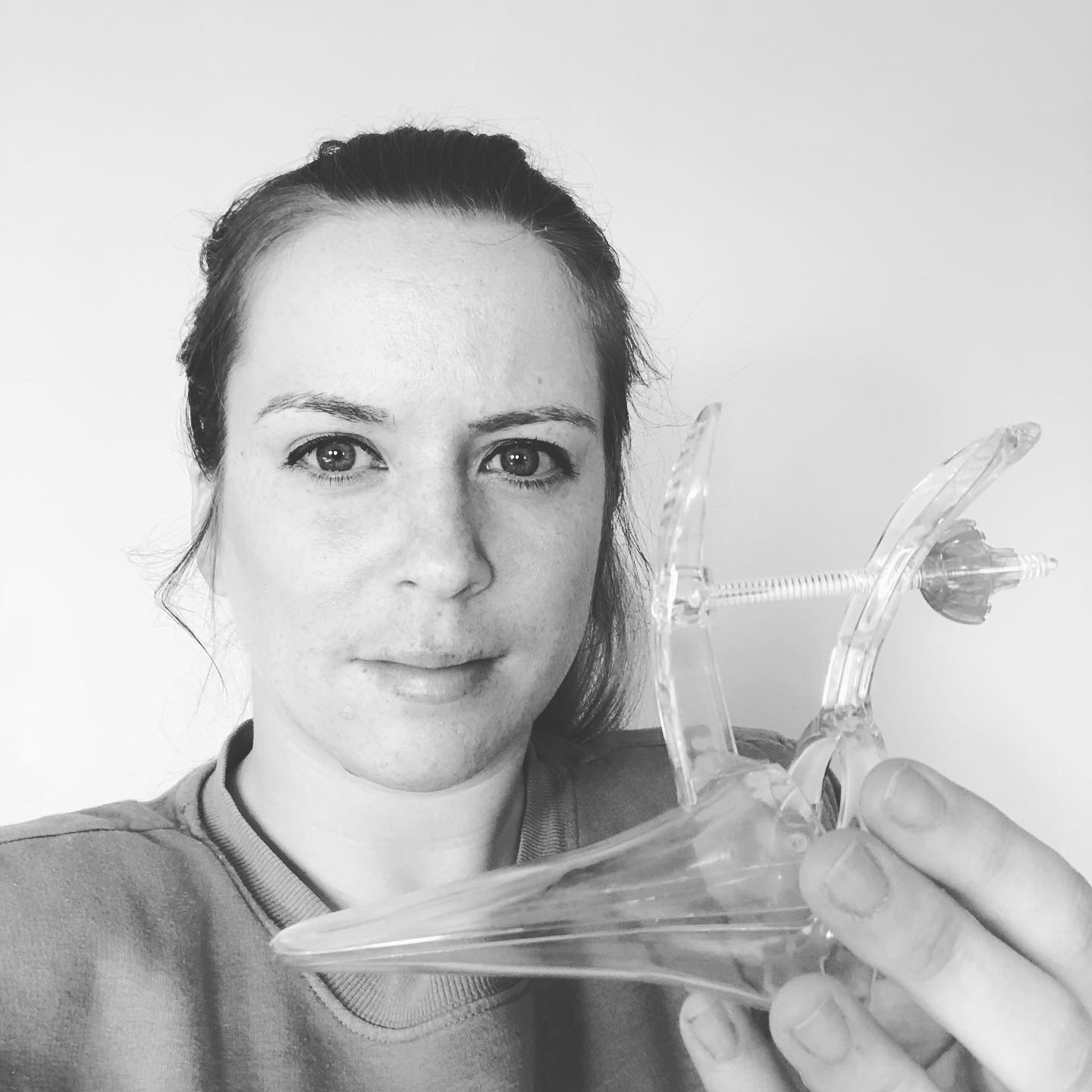Cervical Screening
What you really want to ask your GP
Reality star Jade Goody’s high profile battle with cervical cancer in 2009 raised awareness of the NHS’s cervical screening programme tremendously, reversing the trend of the previous decade of falling demand for screening. However, this effect has long since worn off, and uptake has once again dwindled, especially in younger age groups. Cervical screening can stop cancer before it starts, saving the lives of approximately 5,000 people each year. Let’s empower ourselves, our family and friends with the knowledge to take up this potentially lifesaving test with this no-nonsense, myth-busting guide to cervical screening.




Who is cervical screening for?
Everyone with a cervix should be able to access the NHS cervical screening programme. You should be invited by mail for a smear test every 3 years between the ages of 25 to 50, then every 5 years until the age of 64 if you’re registered with a GP as a female. If you’re a trans male who is registered as male with your GP surgery, the system that is used to call people for their smear tests won’t call you automatically, but you are eligible and can access screening by contacting your GP. If you’re non-binary and have a cervix, you are also eligible. If you are intersex, check with your doctor if you have a cervix or not to see if you need to be screened. Likewise, if you’ve had a hysterectomy and aren’t sure if you have a cervix, check with your doctor. The bottom line is, if you’ve got a cervix, you’re eligible.
I’m under 25 or over 65; why can’t I have a screening?
Cervical cancer under the age of 25 is really rare. Also, at this age, the cervix undergoes many natural changes which might look abnormal on a cervical screening test. This could lead to unnecessary worry, investigations and treatments (some of which can lead to issues in future pregnancies).If you’re not old enough for a smear test but have symptoms such as:
•abnormal vaginal bleeding (bleeding in between periods, bleeding after sex, or bleeding after the menopause for those that this applies to)
•pain during sex
•abnormal vaginal discharge
please speak to your GP right away. If there is suspicion of changes to the cervix, your GP will refer you for further tests.
Likewise, cervical screening stops at age 64 because it’s highly unlikely that a woman over 64 who has been regularly screened will go on to get cervical cancer. If the final 3 screening tests in the 15 years running up to age 65 show any abnormalities, the person will continue to be invited until they have either 3 tests showing no abnormal cells or a test showing no HPV infection. If someone over 64 has never had cervical screening or hasn’t had screening since age 50, they can still be screened by contacting their GP.
What happens at cervical screening?
Some people refer to this as a ‘smear test’. Usually, the test is pain-free, but for some people, the test can be a little uncomfortable. Remember, you’re in control. You can stop the test at any time, or ask to pause to take a breather. Please try not to be embarrassed or scared to talk about how you’re feeling before or during the test as the person doing the test might be able to help. This is especially important if you’ve never had sex before (especially if you’ve also never used a tampon), or have been the victim of sexual abuse. There will be an opportunity before the test to talk about any anxiety you might be feeling. You’ll also be asked when your last period was, if you have a coil, or if you’re taking the contraceptive pill or HRT.
Generally speaking, this is what happens.
You’ll be asked to undress from the waist down behind a screen, lie on your back on the couch, and you’ll be given a sheet to cover yourself with. You’ll be asked to bend your knees, keeping your ankles together and letting your knees flop to the side. A speculum is used to help visualise your cervix – it’s a smooth, long thin piece of equipment and it may have some water or lubricant on it. The speculum is slowly inserted into the vagina. Once the speculum is inside your vagina, it will be gently opened. Often your cervix will come into view at this point, but sometimes the speculum might be gently moved around, or you might be asked to change your position slightly to help. A small, soft brush is then used to take a sample of cells from your cervix. The speculum is removed and then you can get dressed. It normally takes less than 5 minutes to do the test.
You will see some pictures of what the speculum and brush look like. Only the tube-shaped bit of the speculum goes in (the big bit at the end is only used to open and close it), and they come in different sizes. The brush, as you can see, is soft and rubbery.
I can honestly assure you that the person doing your test doesn’t mind in the slightest if you’ve got piercings or tattoos, what your lady garden looks like if you’ve not shaved your legs, or what you look like down below.
It’s best to try to avoid having your smear test while on your period or the 2 days before or after your period. Usually, if you’re pregnant your smear test will be delayed until 12 weeks after you’ve given birth (unless, in some cases, if you’ve had a previous abnormal result).
Some people might get some period-like cramps for a few hours, or a small amount of bleeding afterwards. If you have any heavy bleeding or bleeding that lasts for more than a few hours, contact your GP surgery.
There is a good video on YouTube of a live smear test so you can see it in action if you wish! www.youtube.com/watch?v=4y_d6R9loGk
What does the test look for?
This test does not look for cancer. The aim of the test is to prevent cancer by detecting abnormal cells that could turn into cancer if left to their own devices. The sample is first of all tested for human papillomavirus (HPV). HPV is a really common virus that can be passed on through any type of sexual contact with a man or woman (yes, this means oral sex, rimming, hand jobs, fingering, sharing sex toys, or any skin to skin contact of the genitals). There are a lot of different types of HPV, but some types can causes abnormal changes to the cervix, which could go on to cause cervical cancer. HPV 16 and HPV 18 are the two most common culprits for causing these changes. Having HPV infection does not cause symptoms, so you won’t know that you have it, and most people’s bodies get rid of the infection on its own. However, if the infection isn’t got rid of and hangs around, it can cause changes to the cervix. If you are found to have these types of HPV, the sample is then checked for any changes to the cells of your cervix. Even if you’ve not had sex for a long time, or haven’t changed partners, you could still have HPV as it can persist in your body for a long time.
Do I need to attend cervical screening if I’ve had the HPV vaccine?
The HPV vaccine was introduced in 2008 for girls in year 8 of school, and later extended to include men who have sex with men up to the age of 45, and to boys in year 8. The vaccine is really effective and protects against many types of HPV that can cause cervical cancer (including HPV 16 and HPV 18, which cause up to 70% of cervical cancers). However, the vaccine does not protect against all types of HPV that can cause cervical cancer, so even if you’ve had the vaccine it’s still important to attend cervical screening.
I’m a virgin. Do I need to attend?
First of all, remember we’re not just talking about penetrative sex as a cause for HPV. Any sexual contact can put you at risk of HPV, and therefore cervical screening would be recommended. If you have never had any type of sexual contact, you are at a much lower risk of getting cervical cancer as you won’t be at risk of HPV, which causes 99.7% of cervical cancers. You may or may not want to attend the screening to completely rule out any changes; it’s your choice. A doctor or nurse would be happy to discuss this with you at the surgery. If you do go along for screening, please do let the person doing your test know so they can make you as comfortable as possible and use the right size speculum. And remember, you’re in control, if you need to stop or pause to take a breather, speak up.
I’ve heard about smear tests that you can have at home. Can’t I do that instead?
These home swabs are being trialled in certain areas of London where screening appointment attendance is really low at the moment, with women who are 15 months overdue for their cervical screening. The swabs are to detect HPV. If it is detected, the woman is then invited for a smear test at the GP surgery. Hopefully, this breaks down a lot of barriers for women who don’t attend the traditional screening; like embarrassment or not having time to attend. So this test isn’t available for everyone at the moment, but if the pilot goes well, who knows what the future may hold.
Some really good resources can be found here:
www.jostrust.org.uk/information
www.nhs.uk/conditions/cervical-screening
Please show this article to your friends, mums, sisters, daughters….anyone that has a cervix! Let’s look after ourselves and each other by preventing cervical cancer.
Dr Hannah Missen is a mummy to Primrose, and a general practitioner (GP) with a previous background in obstetrics and gynaecology. She has particular interests in research and academia, medical ethics and law, and women’s health. Find her on Twitter @DrMissen











